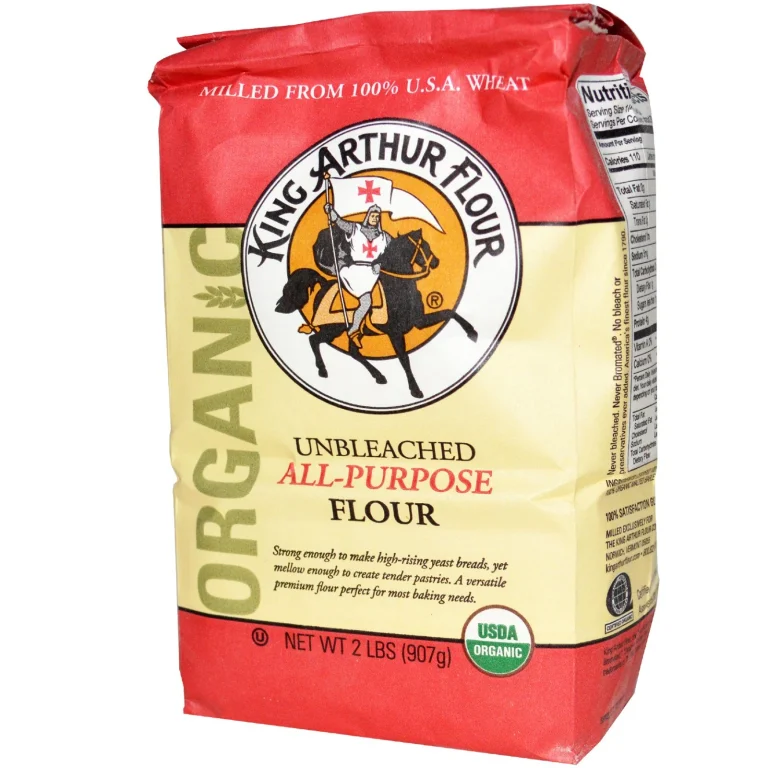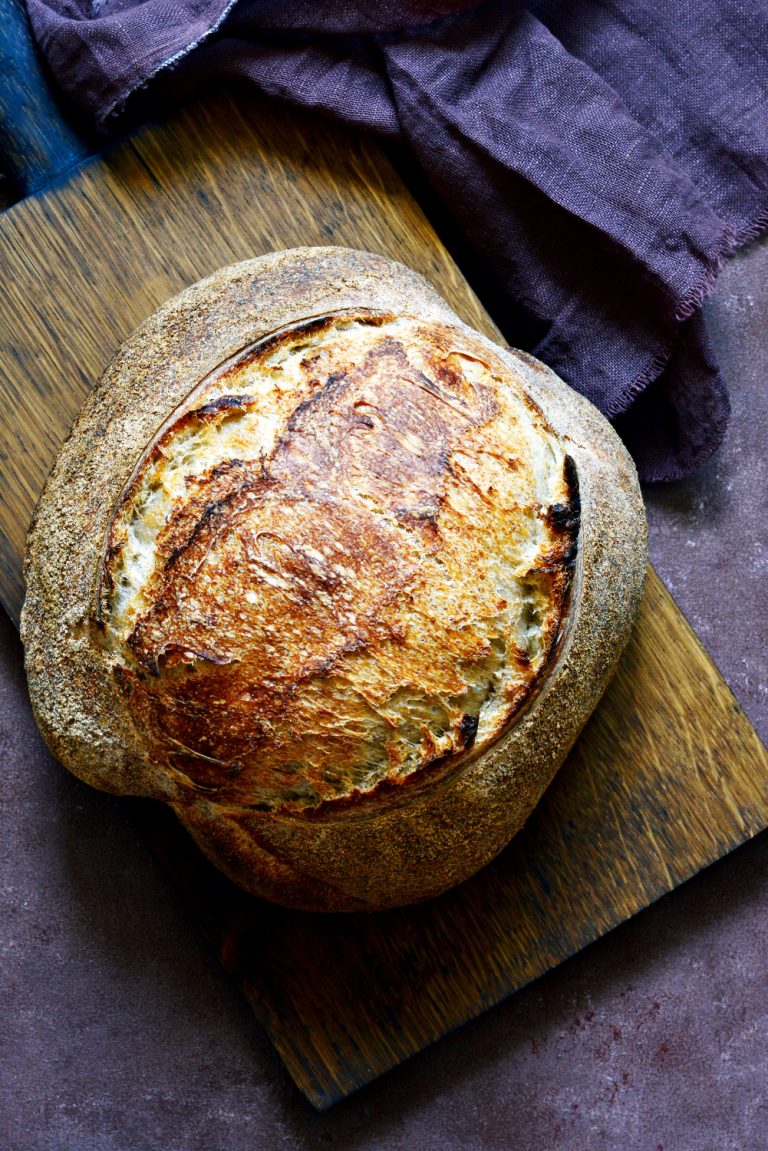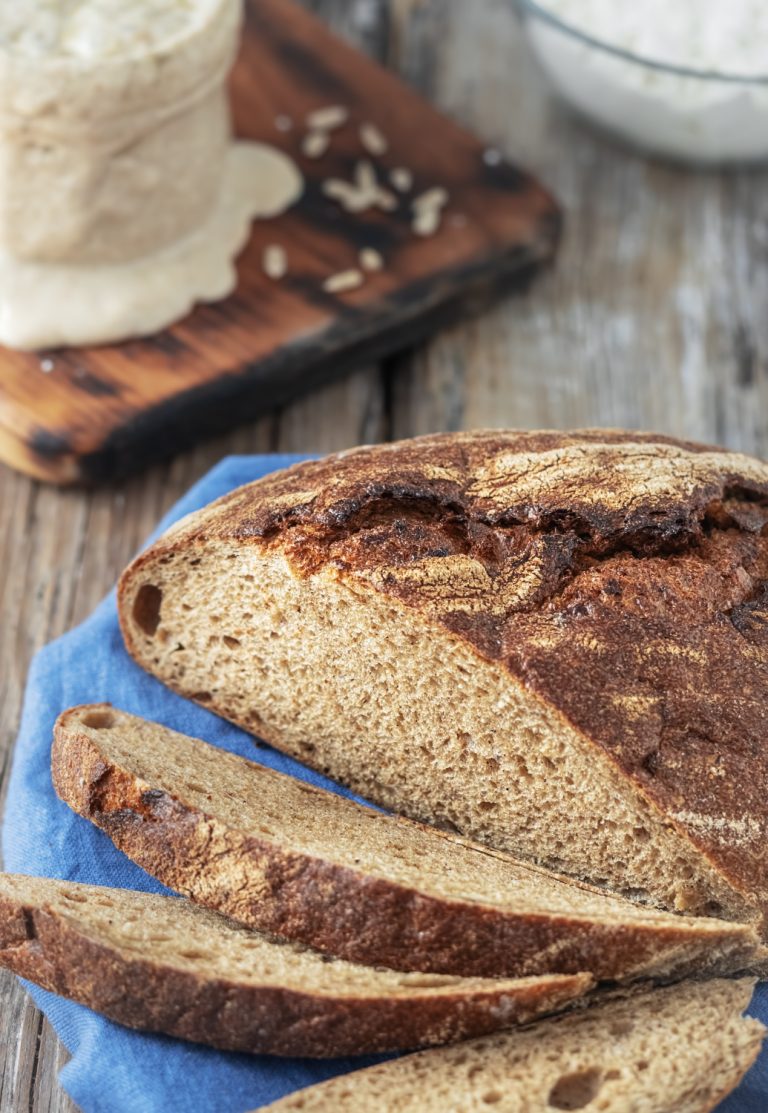Best Professional Bread Lame: Top Scoring Tools Compared for 2024
Professional-looking bread differs from amateur ones mainly due to the quality of scoring. A professional bread lame helps create distinctive patterns that boost the bread’s looks and control its expansion while baking. Bakers use these specialized scoring tools for consistent results and the best oven spring with each loaf.
The right bread scoring tool makes all the difference. Blade type and handle design are just two factors that matter. This piece gets into the best bread lames you can buy in 2024. It compares straight and curved blade options while looking at features like blade replacement systems and grip comfort. You’ll find how different scoring knives work with dough of all types and learn techniques that give you professional results.
Top Bread Lames for Professional-Quality Scoring
Professional bakers know quality scoring tools lead to beautiful, consistent bread. Let’s explore three outstanding breadlines that dominate the market in 2024.
Baker of Seville Bread Lame
The Baker of Seville stands out with its patented design, which lets you quickly switch between straight and curved blade setups. This professional bread lame is crafted entirely from stainless steel and lasts longer than regular lames. You can also clean it in the dishwasher. The adjustable washer system makes shared scoring styles possible in seconds.
Breadtopia Bread Lame
The Breadtopia model stands out with its lightweight and superior control. Its baguette-shaped handle gives you a perfect grip, and the adjustable blade holder lets bakers set their ideal scoring angle. Thanks to its simple mechanism, you can replace blades with minimal effort. The clean, minimalist design delivers precise cuts on all types of dough.
Wire Monkey Goose Lame
The Wire Monkey Goose beautifully blends practicality with style through its solid American black walnut construction. This lame’s curved handle design smartly eliminates knob protrusions that could snag on the dough. A magnetic blade guard adds safety and convenience to the package. The handle’s ergonomic shape helps bakers make smooth upward and downward scoring movements.
Key Specifications Comparison:
| Feature | Baker of Seville | Breadtopia | Wire Monkey Goose |
|---|---|---|---|
| Material | Stainless Steel | Resin & Steel | Black Walnut & Steel |
| Blade Style | Adjustable | Flexible | Fixed |
| Included Blades | 6 | 5 | 5 |
| Special Feature | Convertible Design | Adjustable Angle | Magnetic Guard |
These professional bread lames are a great way to gain different advantages based on your baking priorities. Each tool will help you achieve perfect oven springs and create stunning scoring patterns.
Key Features to Look for in a Bread Lame
Bakers need to understand essential features when choosing a professional bread lame. This understanding will lead to a better tool selection that substantially affects scoring quality and baking outcomes.
Blade Style and Adjustability
The blade configuration plays a crucial role in scoring precision. Straight blades create clean, precise cuts that work best for geometric patterns. Curved blades help create the sought-after “ear” in artisan loaves. Premium models like the Baker of Seville let bakers switch between different blade styles based on their scoring needs.
Handle Material and Grip
The handle’s construction directly impacts your comfort and control when scoring. You’ll find options from lightweight plastic to premium hardwoods and stainless steel. Designs that work best include:
- Ergonomic shapes that fit multiple grip positions
- Non-slip texture that ensures secure handling
- Balanced weight that provides precise control
Ease of Blade Replacement
Blade replacement should be quick and safe to maintain consistent performance. Modern lames employ different mounting systems, ranging from simple slide-on mechanisms to screw-lock designs. Breadtopia’s model shows the fastest way through its simple blade replacement system, which requires minimal contact with sharp edges.
Safety Features
Professional bread lames should include multiple safety elements:
| Safety Feature | Purpose |
|---|---|
| Blade Guards | Protect users during storage |
| Secure Mounting | Prevent blade slippage during use |
| Storage Cases | Enable safe transportation |
| Magnetic Holders | Make blade changes easier |
The Wire Monkey Goose shows exceptional safety features through its magnetic blade guard and secure locking mechanism. These features protect users and keep the tool functional and accessible.
When evaluating a bread scoring tool, bakers should consider how its features align with their needs. They might create simple slashes or intricate decorative patterns. The perfect lame combines safety, functionality, and ease of use to deliver consistent, professional results.
How to Use a Bread Lame Effectively
Bakers need to become skilled at bread scoring through proper technique and timing. A professional bread lame acts as an extension of the baker’s hand and creates purposeful cuts that guide the bread’s expansion during baking.
Proper Scoring Techniques
Success in bread scoring depends on the angle and depth of cuts. A bread scoring tool works best with a 30-degree angle to create ears, while straight cuts need a 90-degree angle. The cut should reach about ½ inch deep and go below the dough’s surface skin to work properly.
| Scoring Angle | Best Used For | Result |
|---|---|---|
| 30 degrees | Batards, ears | Lifted crust flap |
| 45 degrees | Decorative cuts | Even expansion |
| 90 degrees | Boules, geometric | Clean separation |
Creating Different Patterns
Bread shapes need specific scoring techniques that enhance their final appearance. Bakers can choose several classic patterns when working with boules:
- Single slash creates a dramatic opening in the bread
- Cross-cut promotes balanced expansion throughout
- Diamond pattern allows controlled and even rise
- Wheat stalk adds both beauty and function
The bread lame knife must glide in one confident, continuous motion. Sawing back and forth can damage the dough’s surface.
Adjusting for Different Dough Types
Temperature substantially affects how well scoring works. Cold dough straight from the refrigerator gives cleaner cuts. Room-temperature dough needs a swift and decisive motion. Bakers should chill very soft dough briefly before scoring.
Because of its dense structure, sourdough bread must be cut deeper into whole-grain dough. High-hydration doughs work better with shallow scores that prevent excessive spreading during baking.
Sharp blades create the best results. Dull blades drag and tear the dough instead of slicing it cleanly. A sharp, straight blade delivers precise cuts that work perfectly for functional and decorative scoring patterns. Bakers should check their blade replacement regularly.
Maintaining Your Bread Lame
Professional bakers know that a well-maintained bread lame consistently scores bread and lasts longer. Their careful attention to these scoring tools directly affects their bread’s appearance and oven spring quality.
Cleaning and Storage
Bakers should clean their bread scoring tool with a dry cloth right after use. Both blade sharpness and handle durability suffer from moisture exposure. Professional bakers recommend these storage practices:
- Keep the lame in a dedicated case or protective sleeve
- Store in a dry environment away from humidity
- Use a magnetic holder that protects the blade and provides easy access
Many artisan bakers apply a light coating of olive oil to the blade. This prevents rust formation and works especially well with high-hydration doughs.
Blade Replacement Guide
Blade replacement timing depends on how you use and maintain your tools. Professional bakers recommend following this schedule:
| Usage Level | Replacement Frequency | Signs of Wear |
|---|---|---|
| Light (1-2 loaves/week) | Monthly | Visible dulling |
| Medium (5-8 loaves/week) | Bi-weekly | Inconsistent cuts |
| Heavy (Daily baking) | Weekly | Dragging during scoring |
Your sourdough bread lame needs more frequent blade changes if you work with whole grain or seeded loaves. These dough types cause more wear on the cutting edge.
Sharpening Tips
Most professional bakers prefer blade replacement over-sharpening, but some keep their straight blade lames sharp through careful maintenance:
- Really clean the blade before any maintenance
- Use a fine ceramic honing rod to restore minor edges
- Keep the original blade angle with light pressure
- Check sharpness on parchment paper before scoring dough
Wooden-handled lames need periodic conditioning with food-grade mineral oil to prevent splitting and maintain their integrity. Regular maintenance will give the best professional bread and reliable performance through countless scoring sessions.
Conclusion
Professional bread lames are essential tools that help bridge the gap between amateur and artisanal bread making. The versatile Baker of Seville and ergonomic Wire Monkey Goose models provide distinct advantages that suit different baking styles and skill levels. Bakers who become skilled at using these precision instruments with proper technique and regular upkeep can achieve consistent, professional-quality scoring that boosts their loaves’ appearance and performance.
Quality tools and premium ingredients must work together for success in artisanal bread making. Professional bakers know exceptional results come from paying attention to every detail – choosing the right lame, keeping blades sharp, and following proper storage methods. Change your baking today with an authentic artisanal sourdough starter from The Yeast We Can Do – email john@theyeastwecando.com to add the unmistakable flavor and character of true sourdough to your creations. Bakers with the right tools and ingredients can create bread that matches their artistic vision and delivers optimal oven spring and crust development.
FAQs
How frequently should the blade of a bread lame be replaced?
While there’s no strict schedule for replacing the blade of a bread lame, it’s advisable to rotate the blade to utilize all four corners. Typically, bakers change the blade every five to ten loaves to ensure the slashes on the bread remain clean.
What exactly is a bread lame?
A bread lame primarily consists of a handle attached to a razor blade. It is designed explicitly for slashing bread dough to help it rise evenly during baking and prevent unsightly cracks in the crust.
Is it better to use a curved or straight bread lame?
The choice between a curved or straight bread lame depends on the type of bread you are making. Use a curved lame for batards and similar shapes to create a pronounced ear and a straight lame for boules and other shapes where the goal is simply to allow steam to escape.
What should I consider when selecting a bread lame?
When choosing a bread lame, consider the type and comfort of the handle, as well as the shape and size of the tool. A good bread lame should feel similar in length and weight to a butter knife, with a handle that comfortably holds the blade.






